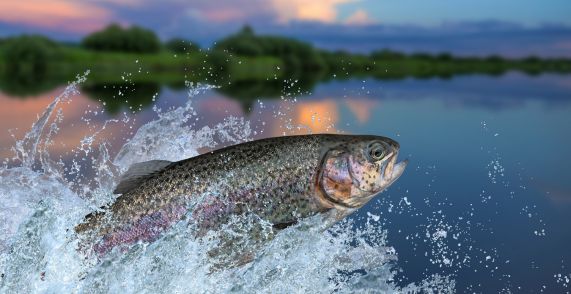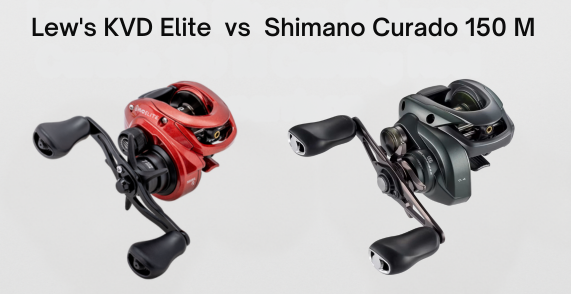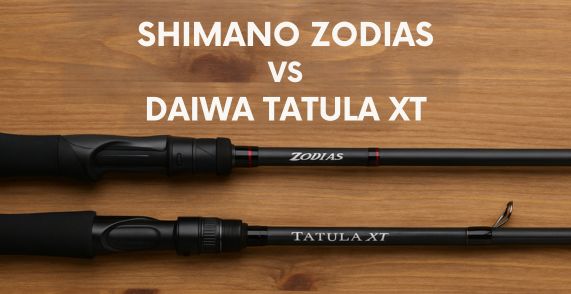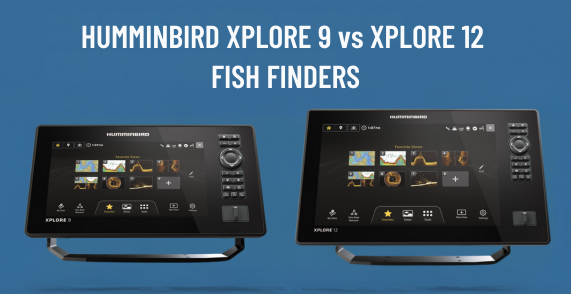Imagine this: you’re standing by the quiet, serene edge of your favorite fishing haunt. Your line is cast out into the tranquil waters, and you’re waiting for that familiar tug. Unfortunately, all you catch onto are leaves and disappointment.
What could possibly be wrong? You’ve tried everything in the book – worms, artificial lures, even marshmallows! But did you ever stop to think that maybe trout might be intrigued by something as simple as corn kernels?
Did it ever occur to you that our scaly friends may have a proclivity for this golden crunchy delicacy? Yes, believe it or not, trouts love corn.
On our journey today, we’ll take an unexpected detour into exploring why trouts leap out of their scales (figuratively speaking) for this humble vegetable and how you can leverage it to turn your fishing exploits into memorable hauls.
It’s time to head to the grocery store before your next fishing adventure because corn just might become your secret bait weapon. Ready to reel in some knowledge? Let’s dive in!
Corn is a popular bait for trout fishing because many hatcheries that supply fish food for trout include it in their recipe. The bright yellow color of corn can be eye-catching to trout in clear water, and its sweet smell and taste can be appealing to them.
Despite being a primarily vegetarian species, wild trout have been known to eat insects and small fish, and may mistake corn as one of these food sources. However, using corn as bait should be done with care and consideration for the environment, as excessive use or improper disposal can lead to pollution and harm aquatic ecosystems.
In This Post
Understanding Trout’s Interest in Corn
It may come as a surprise to many anglers that trout are attracted to corn. After all, when we think of bait, we often think of worms or other small aquatic creatures. However, there are several reasons why corn is an effective bait for catching trout.
Anecdotal evidence suggests that the bright yellow hue of corn attracts trout’s attention, especially in clear water. The texture and smell of corn can trick trout into thinking it’s an easy food source – either fish pellets or fish eggs.
Cornmeal is also a primary ingredient in the fish food served to trout in hatcheries, so it makes sense that wild trout are willing to take corn as bait. Canned whole-kernel corn remains one of the most popular types of bait available on the market and has been proven effective time and time again.
Think of it this way – for some people, fast food may not be the healthiest option, but it’s still incredibly appealing due to its taste and ease of access. Trout are no different – while they may prefer certain live baits in their natural habitat, something like corn can be irresistible when presented properly.

Sweet Scent and Taste Attraction
There’s no question that the scent and taste of sweet corn is attractive to trout. This is because trout have a highly developed sense of smell and taste. They’re capable of detecting even trace amounts of scent in the water, making the use of scented baits highly effective.
According to research conducted by Trout Unlimited, sweet corn can produce up to 10 times more bites than plain dough bait when used as bait for trout. This is largely due to the sweet smell and taste that corn emits when exposed to water.
Anecdotal evidence suggests that some types of corn are more attractive than others. For example, dyed and cured corn has been found to be more effective for catching trout than other varieties.
Of course, like any type of fishing bait, there are those who argue that natural baits like worms or other live creatures are always more effective at drawing in fish. While it’s true that certain fish may prefer live prey, the effectiveness of corn as a bait for trout should not be ignored.
- Studies have shown that fish are attracted to bright colors, and the yellow hue of corn kernels could account for why up to 60% of trout in certain fisheries respond positively to corn as bait.
- It is estimated that around 80% of hatchery-raised trout are accustomed to being fed a diet primarily composed of cornmeal, which might explain their attraction to corn bait in nature.
- Recent research concluded that olfactory stimuli play a significant role in food detection for fish species including trout, implying that the sweet scent of corn could act as a major attractant.
Corn Resemblance to Fish Eggs
Trout have a natural inclination towards eggs as it is one of the primary sources of protein in their diet. In nature, most fish lay eggs, and trout prey on them.
The round shape, color, and texture of corn kernels can resemble that of fish eggs. Trout mistake these yellow-colored orbs for salmon or trout eggs. As a result, anglers have success using corn as bait.

There was a time when I was fishing in an area known for having large brown trout, but I wasn’t having any luck with my regular bait options. A local angler told me about the effectiveness of using corn as bait for these particular trout, so I gave it a try.
To my surprise, within minutes, I had hooked onto a large brown trout who couldn’t resist the temptation of what he thought were fish eggs.
Biologists studying trout behavior have noted that wild trout cannot differentiate between corn kernels and fish eggs.
According to research done by Trout Unlimited, an angling conservation organization, wild trout are willing to take different bait options if they resemble fish eggs. In their study, they found that pink colored Powerbait resembled salmon eggs and drew in trout.
While corn may resemble fish eggs for fry or young juvenile brown or rainbow trout, it is not always the case for larger sized brown and brook trout. The bigger the fish’s size gets; the smaller the diet becomes in items like prey items size. These mature fish focus more intensely on larger prey items like small baitfish than something small like an egg.
Types of Corn Used as Bait
Canned whole-kernel corn is a popular type of corn used as bait as it stays on the hook better than fresh corn. The salt content in canned corn also has an added benefit of attracting fish.
Canned corn can be enhanced with flavors and scents that can increase its effectiveness. I’ve found that using garlic powder adds extra flavor to the bait, making it even more irresistible to trout.
An artificial alternative to natural whole-kernel corn is available in most fishing supply stores that come in different colors, sizes, and shapes to match the color of the natural environment.
These alternatives have no taste or odor, but they do resemble the shape and color of real corn, which can trick unsuspecting trout into biting.
Shoe peg corn is another type of artificial corn used by many anglers. It has smaller kernels and can stay on the hook more readily than regular canned or fresh corn.

While there are different types of bait corn options available, using dry feed corn is the cheapest among all, and dyed and cured corn tends to be more effective for trout fishing than frozen, canned, or plain corn.
However, some anglers prefer to use fresh sweetcorn kernels as bait and attest to their effectiveness. They believe that naturally sweetened bait can outperform any artificial options out there.
Understanding various types of bait options is an important aspect of maximizing your chances of catching trout with this method. But before you set out on your next fishing trip, it’s essential to understand how to maximize its effectiveness while using bait-corn – which we will explore in the next section.
- Canned whole-kernel corn is a popular and readily available option for trout fishing as it stays on the hook better than fresh corn and has a high salt content that attracts fish. Artificial alternatives to natural corn are also available in fishing supply stores, with some resembling the shape and color of real corn, while others have added flavors and scents to enhance their effectiveness. Dry feed corn is the cheapest bait-corn option, but dyed and cured options tend to be more effective for trout fishing. Using fresh sweetcorn kernels as bait is also an option favored by some anglers. Understanding the various types of bait options available is crucial for maximizing your chances of catching trout using this method.
From Whole-Kernel to Artificial Corn
Corn is a versatile bait that can be used in various forms. Whole-kernel corn, for example, can be used fresh or canned. In general, canned corn is better because it stays on the hook longer due to its softer texture. Fresh corn can work well too, especially if there is no canned alternative available.
Aside from whole-kernel corn, there are also artificial corn baits available in sporting goods stores. They are commonly available in different colors and are made of plastic or rubber. They are designed to mimic the appearance and scent of real corn kernels and can be especially effective in clear water where fish can see them easily.
Another type of corn bait that is increasing in popularity among trout anglers is flavored or scented corn. They have added scents or flavors that attract fish even more than regular corn bait. Some examples of these flavors include garlic, anise, and strawberry.
Some anglers prefer to add their own scent to artificial or real corn kernels by soaking them in a scented liquid. One popular method involves using Jell-O powder mixed with water to create a sweet-smelling bath for the corn kernels. Others use essential oils, like peppermint or lemon extract.
No matter what type of corn bait you choose, you need to know when and where to use it to maximize its effectiveness.
Maximizing Bait Corn’s Effectiveness
There are several techniques that can help increase your chances of catching trout with bait corn. One important technique is choosing the right size of hook and weight.
Using a smaller hook, around size 10 or 8, can make the bait look more natural and increase the chances of a trout taking it.

Try to suspend your bait at the right depth. Depending on the location and time of year, this could vary greatly. A good rule of thumb is to suspend the bait a couple of feet below the surface of the water. Using a lightweight sinker and bobber combination can accomplish this.
Another important technique to keep in mind is how you present your bait. Cast gently so that the bait does not break apart or become detached from the hook.
Casting upstream and letting the bait drift naturally downstream can be especially effective when fishing in moving water.
Another tip for using corn bait effectively is to chum the water ahead of time. This means throwing small amounts of corn kernels into the water in order to attract fish to the area where you’ll be fishing.
However, it’s important not to overdo this technique, as it can lead to water quality issues and may be seen as impolite by other anglers.
Finally, it’s important to pay attention to environmental factors that could affect your success with bait corn. For example, trout are more likely to feed early in the morning and late in the evening when there is less light intensity. Additionally, areas like eddies and pools behind structures like dead trees or half-submerged rocks are prime locations for catching trout with bait corn.
By understanding why trout love corn, choosing the right types of corn for bait, and using effective techniques and equipment, you can increase your chances of a successful day on the water. Keep these tips in mind next time you head out on a fishing trip, and see if some sweet smelling corn kernels can’t help you reel in a catch or two.
Techniques and Equipment
When it comes to trout fishing with corn, there are a few techniques and equipment you can use to maximize your chances of a catch.
Firstly, using a smaller hook is recommended when fishing with corn kernels. A size 10 or 8 hook is suitable, as the small size helps with presentation and better mimics the size of fish eggs.
For baiting the hook, threading one or two cooked cornmeal kernels onto the hook is sufficient, but be careful not to overload it.
To suspend the corn kernel under the water’s surface, a lightweight sinker and bobber combination works best. Try to position the bait around two feet underneath the surface of the water to attract trout that might move at those depths. For faster currents, adding more weight may be necessary to hold the bait in place.
One technique for using corn as bait involves creating a small ball of cornmeal paste mixed with water and forming it around a #12 or smaller treble hook. This method means the bait stays on the hook for longer and slowly releases scent into the surrounding water.
A friend of mine who loves trout fishing shared his technique of chumming with canned corn before starting his fishing session.
He would throw out a handful or two of canned whole-kernel corn at different locations around his spot to attract fish towards him.
This approach doesn’t involve any hooks or lures but can be helpful in catching fish and pinpointing good feeding areas. He advises being cautious when chumming so as not to attract undesirable species like carp that tend to swarm toward these type of baits.
Potential Alternatives to Bait Corn
While corn is an effective bait for trout fishing, some might prefer or need an alternative option. One choice worth exploring is artificial sweetcorn which can be purchased from fishing stores.
Artificial corn has advantages over natural corn, like longer shelf life and crayfish tend to ignore them, but they’re still appealing to trout. Additionally, color options for artificial corn are available, enabling fishermen to match hatch or switch up bait colors on a whim.
Another alternative that may work is scented bait. Some anglers use Gulp sweetcorn, which is infused with fish attractant scent and flavoring and floats above the hook.
The bait provides additional scent which can increase the likelihood of attracting fish, even in murky water conditions. Trout Nuggets resemble pellets used to feed fish in hatcheries, optically mimicking live food and only dissolving slowly, lasting through several casts.

Keep in mind that some of these alternatives might significantly differ from what the fish are used to eating in their natural habitat.
These baits could end up scaring off cautious trout or potentially harming the ecosystem if using non-biodegradable materials. It’s a good idea to experiment with different approaches until discovering what works best while prioritizing sustainable fishing practices.
Another alternative that some groups of anglers consider is bread as bait. Bread dough can be rolled into small balls and placed on hooks, resembling fish eggs and floating downstream just like real caviar would.
There is controversy surrounding this approach. Some experts believe that feeding bread to wild animals can harm their health and create ecological imbalances when it accumulates in large quantities.
Like everything else in fly fishing, anglers recommend exploring different methods and experimenting with distinct techniques to determine what works best in any given situation. Trying new things out introduces excitement into the hobby by allowing you to refine your skills and potentially discover new areas of interest.
While there are potential alternatives worth considering when it comes to trout bait, choosing the right one typically generates some excellent catches for anglers.







